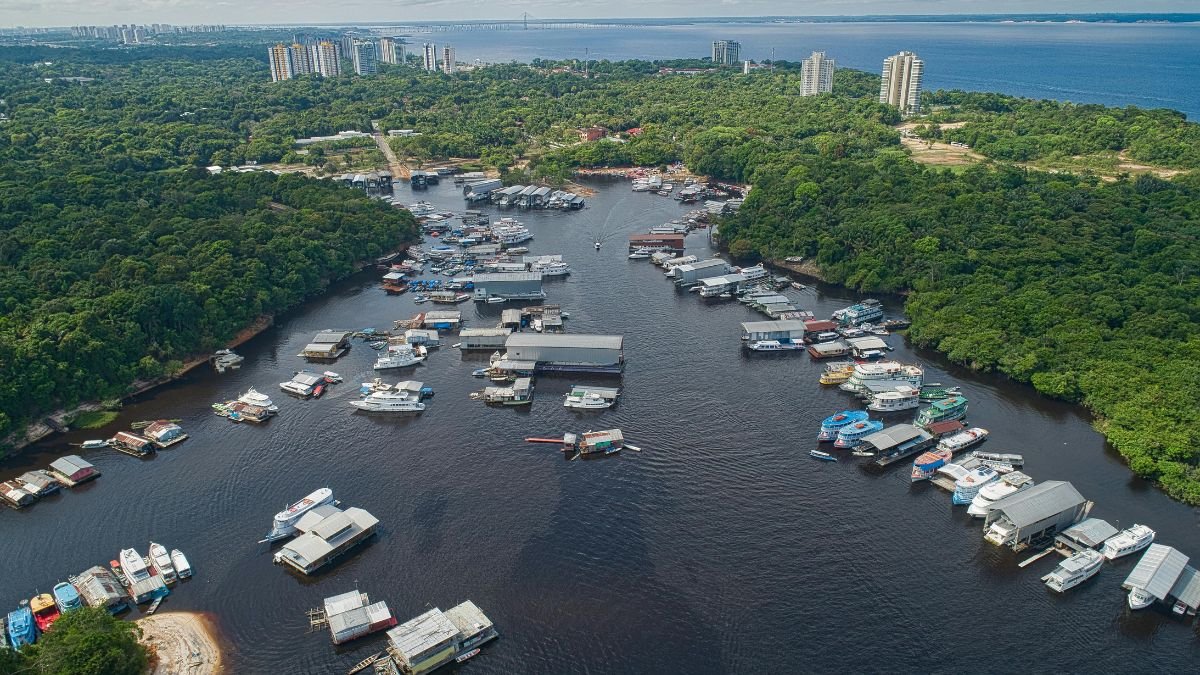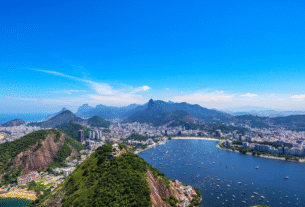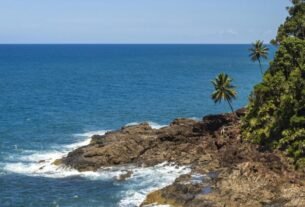Introduction
Did you know that the Amazon rainforest hides a bustling urban jungle, Manaus, and it’s full of secrets? Nestled at the confluence of the Negro and Solimões rivers, vibrant Manaus, Brazil, is more than just a gateway to nature; it’s a treasure trove of cultural treasures waiting to be discovered.
The Amazon rainforest, renowned for its unparalleled biodiversity, serves as a breathtaking backdrop to this urban oasis, where the sounds of wildlife harmonise with the rhythms of city life. As you wander through the streets of Manaus, you’ll discover a unique blend of indigenous traditions and modern influences, reflecting the rich tapestry of cultures that have shaped this remarkable place over the centuries.
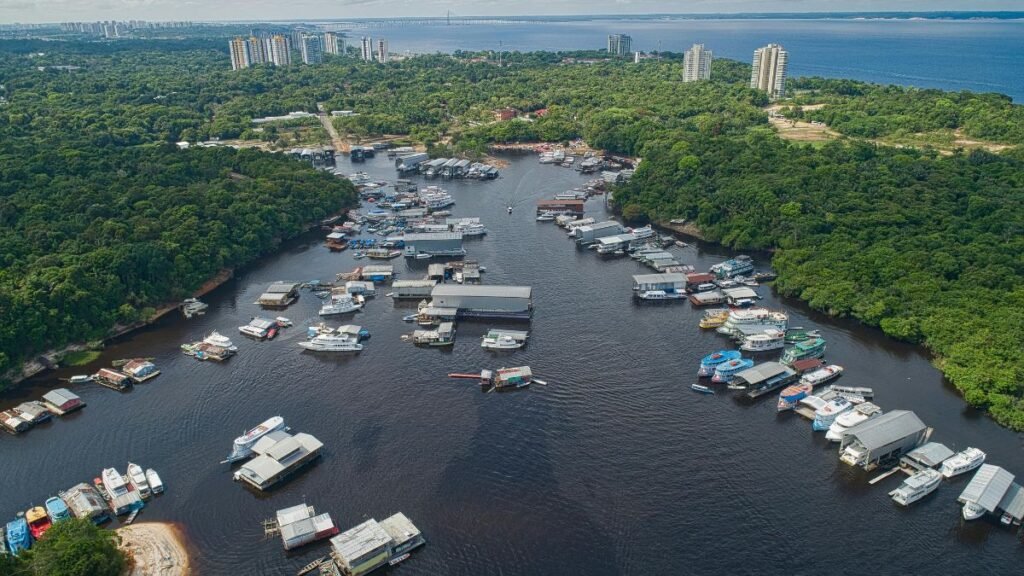
Founded in 1669, the capital of Amazonas state boasts a rich history as the epicentre of the rubber boom, earning it the nickname “Paris of the Tropics.” This bustling city played a pivotal role in the global rubber trade during the late 19th and early 20th centuries, attracting fortune seekers and immigrants from various parts of the world.
Today, its population of over 2 million thrives amid lush greenery and architectural wonders, showcasing a vibrant mix of cultures and traditions that have evolved over time. The city’s streets are lined with historical buildings that reflect its prosperous past, and the influence of various ethnic groups is evident in its cuisine, music, and festivals. But beyond the famed Teatro Amazonas, what else does this enigmatic destination offer?
Key Takeaways
- Manaus is the seventh-largest city in Brazil and the heart of the Amazon state.
- Its strategic location at the confluence of two major rivers makes it a unique location.
- The city was a global hub during the 19th-century rubber boom.
- Modern Manaus blends urban life with unparalleled access to the Amazon rainforest.
- It serves as the starting point for unforgettable river cruises and ecotourism adventures.
1. Mercado Adolpho Lisboa: A Historic Marketplace
Step into a marketplace where history and culture collide under iron arches. Mercado Adolpho Lisboa, built in 1882, is a living testament to the city’s golden age. Its ornate design whispers tales of wealth from the rubber boom, when fortunes were made overnight.
This vibrant hub was not only a centre for trade but also a social gathering place where the local community would come together to exchange stories and goods, creating a rich tapestry of interactions that defined the era.
The Parisian Influence
Modelled after Paris’ Les Halles, the building features intricate ironwork shipped from Europe, showcasing the architectural trends of the time. Stained glass skylights bathe merchant stalls in colourful light, a nod to its nickname, Paris of the Tropics.
Even the fishmongers’ tables, crafted from local hardwoods, echo this elegance, standing as a reminder of the craftsmanship that flourished during the marketplace’s heyday. The market’s layout encourages exploration, with narrow aisles leading to a plethora of stalls, each offering unique products that reflect the diverse culture of the region.
Local Flavours and Crafts
At dawn, the air hums with vendors selling pirarucu, a giant Amazonian fish. Locals swear by its scales, repurposed as natural nail files. In Parintins, nearby artisans weave baskets from palm fibres, preserving traditional techniques that have been passed down for generations.
| Fish Species | Unique Trait | Local Use |
| Pirarucu | Largest freshwater fish | Scales for crafts |
| Tambaqui | Nut-like flavor | Grilled delicacy |
| Tucunaré | Vibrant colors | Sport fishing |
Today, the market blends old and new. Original 19th-century stalls now neighbor specialty coffee shops, drawing both historians and food enthusiasts. Since its 1987 heritage designation, preservation efforts have ensured that this icon thrives for centuries more.
2. Encontro das Águas: Nature’s Spectacle
Witness one of nature’s most fascinating displays where two mighty rivers refuse to blend. The Rio Negro and Solimões rivers meet near the heart of the Amazon River, forming a six-mile stretch of contrasting water colours. This phenomenon, known as Encontro das Águas, has baffled scientists and enchanted travelers for centuries.
The distinct colors arise from the differing temperatures and sediment levels of the two rivers; the dark, nutrient-rich waters of the Rio Negro contrast sharply with the lighter, sediment-laden waters of the Solimões.
This unique meeting point not only creates a stunning visual spectacle but also serves as a vital ecosystem, supporting a diverse range of wildlife. Fishermen and local communities rely on these waters for their livelihoods, showcasing the importance of this natural wonder.
Visitors are often mesmerised by the sight, as they watch the two rivers flow side by side, each maintaining its identity without mixing. It’s a breathtaking reminder of nature’s power and beauty.
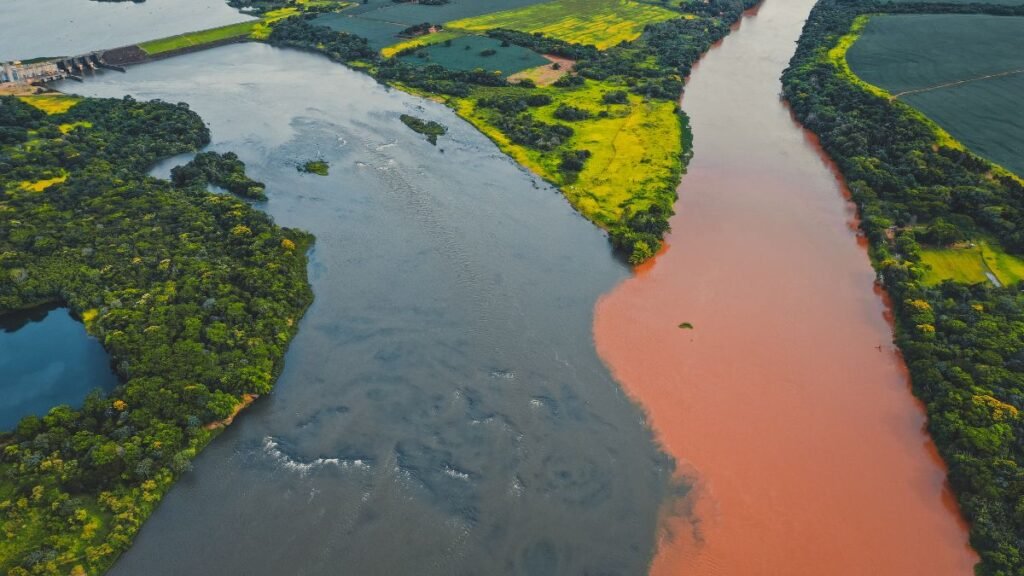
Where the Negro and Solimões Rivers Meet
The dark, tea-like Rio Negro flows at 82°F, while the sandy Solimões runs cooler at 76°F. Their temperature and density differences keep them separate like oil and water. Studies by INPA, the National Institute for Amazon Research, confirm this rare hydrographic dance, illustrating how these two mighty rivers, despite their proximity, maintain their distinct identities due to the unique physical properties of their waters.
This phenomenon not only captivates scientists but also intrigues tourists who come to witness this natural spectacle. Kayakers glide along the visible divide, spotting pink river dolphins that frolic in the waters, their playful nature a joy to behold.
Birdwatchers often spy herons and kingfishers perched near the confluence, their vibrant colours contrasting against the lush green backdrop. For the best photos, capture the stark contrast at golden hour, when the setting sun casts a golden hue over the rivers, enhancing the visual drama of this extraordinary meeting point.
Best Ways to Experience the Phenomenon
Sunset catamaran tours reveal the rivers’ hues deepening under twilight, offering a serene experience as the day transitions into night. For adventurers, guided kayak excursions provide intimate encounters with the region’s wildlife, offering a closer look at the diverse ecosystems that thrive in and around the confluence. From March to June, when water levels are at their peak, the most dramatic views are on display, making it the ideal time for exploration and discovery of this remarkable natural wonder.
| Viewing Method | Best Time | Highlights |
| Boat Tour | March–June | Panoramic vistas, guided commentary, and opportunities to learn about the unique ecosystem |
| Kayak | Early morning | Close-up wildlife, silent observation, and a chance to experience the tranquility of the rivers |
| Close-up wildlife, silent observation, and a chance to experience the tranquillity of the rivers | Sunset | Close-up wildlife, silent observation, and a chance to experience the tranquillity of the rivers |
3. Parque do Mindu: An Urban Oasis
Hidden in the heart of the city lies a thriving jungle sanctuary. Parque do Mindu, a 42-hectare green refuge, defies urban sprawl with its dense canopy and rare wildlife, providing a crucial habitat for various species that might otherwise be lost to development. This remarkable park not only serves as a vital ecological corridor but also as a serene escape for city dwellers seeking solace in nature.
Established in 1989, this site is a testament to conservation in the Amazon state, showcasing a commitment to preserving biodiversity amidst urbanisation. Visitors can immerse themselves in the lush surroundings, where the sounds of chirping birds and rustling leaves create a peaceful ambience, reminding us of the importance of such green spaces in our lives.
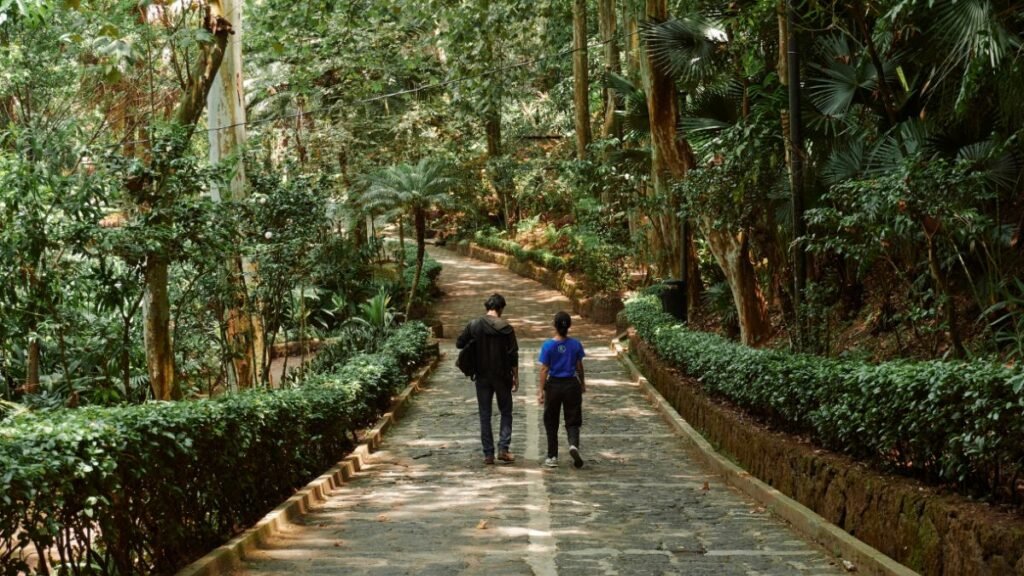
Biodiversity in the City
The park shelters endangered pied tamarins, among the rarest primates in the Americas, known for their distinctive facial markings and social behaviour. These small monkeys play a crucial role in their ecosystem, helping to disperse seeds and maintain the forest’s health. Over 267 bird species flit through the trees, from vibrant macaws to delicate hummingbirds, each contributing to the park’s rich tapestry of life.
A medicinal plant garden showcases Amazonian flora that has been used by indigenous people for centuries, illustrating the deep connection between local cultures and the natural world. This garden not only serves as a resource for traditional medicine but also as an educational tool for visitors to understand the importance of biodiversity in sustaining human life.
Three kilometres of elevated walkways enable visitors to explore without disturbing the ecosystem, providing a unique vantage point to observe the flora and fauna below. At the canopy tower, researchers and tourists alike observe toucans and orchids, marvelling at the intricate relationships between species.
Rare species, such as the ghost orchid, bloom in this microclimate, a testament to the park’s rich biodiversity and the importance of preserving such habitats for future generations.
Walking Trails and Wildlife
Night tours reveal nocturnal creatures: owls, kinkajous, and fluorescent fungi. The park’s rescue program rehabilitates injured animals, releasing them back into the wild. Accessibility ramps ensure everyone can enjoy this urban oasis.
In partnership with the National Institute of Amazonian Research, the park hosts educational programs for schools. Kids learn about reforestation and the delicate balance of urban jungles. It’s a living lab where science meets adventure.
4. Museu do Seringal: Reliving the Rubber Boom
Peel back the layers of history at a museum where fortunes were made and lives were changed. The Museu do Seringal, a replica of a 1890s rubber plantation, immerses visitors in the Amazon’s golden age. Here, the echoes of the boom era linger in every detail, offering a poignant reminder of the complexities of progress. As you walk through the meticulously recreated structures, you can almost hear the bustling sounds of workers and the clinking of tools that once filled the air.
This museum serves not only as a tribute to the wealth generated from rubber but also as a stark reflection of the human cost behind that prosperity.
A Glimpse into Manaus´s Golden Age
The museum exposes the harsh aviamento system, where workers traded latex for crippling debt, often finding themselves trapped in a cycle of exploitation. This system was designed to benefit the wealthy barons, who profited immensely while the labourers struggled to survive.
Original tools, tapping knives, and latex cups line the walls, serving as poignant reminders of the labour-intensive processes that produced the rubber that fueled an empire. Interactive displays show how raw latex was processed into valuable exports, illustrating the journey from tree to market and the immense effort required to extract this vital resource.
Contrasts abound. While labourers endured gruelling conditions, often working long hours under the scorching sun with little to no compensation, barons lounged in opulent mansions, enjoying luxuries that seemed unimaginable to the workers.
The estate’s main house, with European furniture and crystal chandeliers, starkly opposes the workers’ sparse quarters, which were often little more than thatched huts with minimal amenities. This stark juxtaposition highlights the deep socio-economic divides of the time, painting a vivid picture of the disparities in wealth and living conditions.
Preserved Rubber Baron Estate
The riverside location highlights how rubber shaped regional trade, serving as a crucial artery for the booming industry that transformed local economies. A steam-powered building demonstrates early industrial techniques, showcasing the ingenuity and innovation of the time that propelled the rubber trade to unprecedented heights.
Guides explain how Asian plantations later crashed the market, bringing an end to the era of unchecked wealth that had allowed a small elite to amass fortunes while the majority remained impoverished. This shift not only impacted the barons but also the workers, whose lives were irrevocably altered by the fluctuations of global markets.
| Aspect | Rubber Baron Lifestyle | Worker Reality |
| Housing | Luxury mansions | Thatched huts |
| Diet | Imported delicacies | Basic staples |
| Income | Global trade profits | Debt bondage |
Today, the museum also highlights sustainable rubber initiatives, reflecting a growing awareness of ethical practices in the industry. Audiovisual accounts bridge past and present, urging reflection on resource use and the importance of balancing economic gain with environmental stewardship. It’s more than a relic—it’s a lesson in resilience, illustrating how communities can learn from history to foster a more equitable future.
5. Praia da Lua: A Secluded Riverside Escape
The Rio Negro cradles a beach so pristine, it rivals Caribbean shores. Praia da Lua’s crescent-shaped silica sands glow against the river’s dark waters, creating a surreal contrast that captivates visitors at first glance. The soft, powdery texture of the sand invites barefoot strolls, while the gentle lapping of the water adds to the serene ambience. Accessible via 30-minute boat rides, this place feels worlds away from urban bustle, making it a perfect retreat for those seeking solace in nature’s embrace.
Crescent-Moon Beaches
Finely ground quartz gives the sand its signature shimmer and cool texture underfoot, creating an inviting atmosphere for relaxation. Unlike ocean beaches, the gentle water current makes swimming safe year-round, providing a family-friendly environment where children can play without worry. Weekday visits reward travellers with near-private stretches of shoreline, allowing for peaceful moments to soak in the sun or enjoy a good book amidst the stunning backdrop.
Seasonal flooding dramatically reshapes the landscape, adding an element of surprise for repeat visitors. From June to November, high waters submerge parts of the beach, creating unique opportunities for exploration and discovery. Meanwhile, from December to May, expansive sandbanks stretch invitingly across the river. Nearby jungle trails lead to viewpoints overlooking the ever-changing scenery, where adventurers can spot local wildlife and appreciate the rich biodiversity for which the Amazon is renowned.
Swimming and Sunset Views
Motorised watersports are prohibited, preserving the tranquil atmosphere that makes Praia da Lua a true sanctuary. Pink river dolphins often surface near swimmers at dawn, delighting onlookers with their playful antics. As twilight falls, the sky erupts in hues of rose and gold, reflected perfectly on the river’s glassy surface, creating a breathtaking spectacle that draws photographers and nature lovers alike.
- Pack a picnic: Shaded tables along the shoreline provide perfect spots for leisurely meals surrounded by nature.
- Full moon nights transform the beach into a silver landscape, inviting evening strolls under the stars.
- Guides offer sunset kayak tours for optimal photography, ensuring that every visitor can capture the beauty of this magical place.
6. Anavilhanas National Park: The Amazon’s Archipelago
A floating paradise of islands emerges from the dark waters of the Amazon. Anavilhanas National Park, a UNESCO Biosphere Reserve, spans an impressive 350,000 hectares with over 400 islands—the world’s largest river archipelago.
Each dry season, receding waters reveal blinding white sandbars, while floods transform the landscape into a maze of flooded forests, where towering trees seem to rise from the water like ancient sentinels. This dynamic ecosystem is a testament to the power of nature, showcasing how life adapts and thrives in harmony with the ever-changing environment.
Islands That Breathe with the River
The archipelago forms where the river deposits sediments, creating ever-shifting islands that are constantly moulded by the flow of water. In the Marajó region, igapó forests — flooded for half the year — shelter rare species like Amazonian manatees and giant otters, which playfully navigate the waterways
Scarlet macaws streak across the sky, their vibrant feathers a splash of colour against the lush green canopy, while their cries echo through the foliage, adding to the symphony of sounds that characterise this unique habitat.
January brings a surreal spectacle: water lilies bloom in carpets of pink and white, transforming the water’s surface into a painter’s palette. Local guides, who are often descendants of the indigenous peoples, explain how these communities navigate these changes using ancestral knowledge passed down through generations.
Research stations in the park study climate resilience, making it a living laboratory where scientists and conservationists collaborate to understand and protect this vital ecosystem. This collaboration highlights the importance of preserving both the natural world and the cultural heritage that is inextricably linked to it.
Adventures in the Floating Wilderness
Ecotourism thrives in this region, with certified lodges offering immersive three-day cruises that allow visitors to fully experience the park’s wonders. Sustainable practices, such as utilising solar power and recycling waste, ensure that tourism benefits the environment rather than harming it. Visitors can:
- Paddle through narrow channels, spotting caimans basking in the sun, their eyes peering just above the water’s surface
- Fish for piranhas (catch-and-release only), learning about the local fishing techniques that have been used for centuries
- Sleep in treehouse lodges under star-filled skies, where the sounds of the jungle lull you to sleep and the morning sun greets you with a golden glow.
The state mandates the use of indigenous guides for tours, ensuring cultural preservation and authenticity. Their stories reveal how the Amazon rainforest sustains both ecosystems and traditions, showcasing a deep connection to the land that is vital for the survival of their communities.
For explorers, this archipelago isn’t just a destination; it’s a masterclass in harmony, where every visit deepens the understanding of the intricate balance between humanity and nature—a principle also embraced in regions like Palmas, where ecotourism and indigenous heritage blend seamlessly.
Conclusion: Manaus Brazil’s Untold Stories
This vibrant city blends past grandeur with modern resilience. Once the capital of rubber wealth, it now thrives as a gateway to the rainforest. From opera festivals to tech hubs, it defies expectations at every turn.
Sustainable tourism shines here. The heart of the Amazon pulses with cultural fusion, as indigenous traditions blend with global influences in its cuisine and arts. Yet challenges like urban growth and climate change loom.
New museums and research centres highlight its evolving identity. Whether exploring historic markets or river islands, visitors uncover layers of history and innovation. This is a time to see Amazon’s urban soul like never before.
Beyond the obvious lies a world of hidden gems. Each corner tells a story of resilience, beauty, and untamed spirit. Learn more about Rio Branco.
FAQ
What makes Mercado Adolpho Lisboa unique?
This historic marketplace blends Parisian architecture with local culture, offering fresh Amazonian produce, handmade crafts, and a vibrant atmosphere.
Why is Encontro das Águas a must-see?
It’s where the dark Rio Negro and sandy Solimões River collide without mixing for miles—a stunning natural phenomenon best viewed by boat or aerial tour.
What wildlife can I spot at Parque do Mindu?
The urban park shelters endangered species, such as the pied tamarin monkey, along with lush trails, native plants, and a serene lagoon.
How does Museu do Seringal showcase the rubber boom?
The museum recreates a 19th-century rubber estate, displaying original tools, worker quarters, and insights into the region’s economic heyday.
Is Praia da Lua suitable for swimming?
Yes! The crescent-shaped beach along the Rio Negro offers calm, clear waters that are perfect for swimming, sunbathing, and enjoying sunset picnics.
What activities are available in Anavilhanas National Park?
Visitors can kayak through flooded forests, spot pink river dolphins, hike jungle trails, or join guided ecotours to explore the archipelago’s biodiversity.

